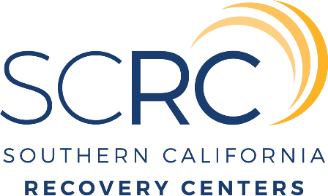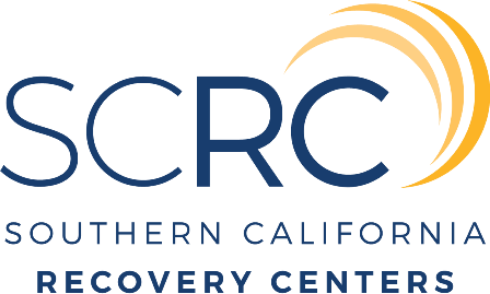Fentanyl is a powerful synthetic opioid that’s up to 100 times more potent than morphine, making it one of the strongest pain relievers available in medical practice today. However, its strength also means that fentanyl carries a high risk of addiction and dependence, leading to severe symptoms of withdrawal for those attempting to quit. Southern California Recovery Centers are at the forefront of offering compassionate, comprehensive addiction treatment services, helping individuals grappling with opioid drug abuse. In this article, we’ll talk about what happens when you stop using fentanyl, and how we can help.
What is Fentanyl?
Fentanyl is a synthetic opioid initially designed to treat intense pain from surgeries, injuries, or chronic conditions. Due to its high potency, it is also one of the most addictive substances, contributing significantly to the opioid epidemic in the U.S. and the surge in opioid-related overdoses and drug abuse.

Why is Fentanyl so Addictive?
Fentanyl is a potent “opioid agonist,” meaning it binds well to opioid receptors in the brain. These receptors are part of the body’s natural pain relief and reward system. When fentanyl binds to these receptors, it triggers a flood of dopamine, a neurotransmitter associated with pleasure and reward, leading to intense feelings of euphoria.
The brain’s reward system, once stimulated by an opioid agonist like fentanyl, begins to associate the drug with positive reinforcement, compelling the individual to repeat the drug use to reexperience those pleasurable sensations. However, over time, continuous fentanyl use alters the brain’s chemistry and its response to opioids. The body starts to require higher doses of the drug to achieve the same level of euphoria, contributing to the development of tolerance and, subsequently, physical and psychological dependence.
Plus, fentanyl’s ability to strongly bind to opioid receptors means even small amounts can produce significant effects, increasing the risk of addiction after just a short period of use. This mechanism of action, combined with its potency, makes fentanyl one of the most addictive substances available.
Causes of Fentanyl Withdrawal
Withdrawal from fentanyl occurs when the body, having become dependent on the drug to function normally, reacts to its absence. This dependence builds up with prolonged or heavy drug use, leading the brain to rely on fentanyl to stimulate pleasure centers and regulate mood. When fentanyl use is suddenly reduced or stopped, the body enters a state of withdrawal as it tries to readjust to functioning without the drug.
Symptoms of Fentanyl Withdrawal
Symptoms of withdrawal from fentanyl can range from uncomfortable to life-threatening, and may include:
- Muscle and bone pain
- Sleep disturbances
- Severe gastrointestinal distress
- Profound sweating
- Uncontrollable leg movements
- Anxiety and agitation
Symptoms can start as early as a few hours after the last dose and are a clear sign of the body’s physical dependence on the substance.

Medical Detox and Treatment
Medical detox is often the first step in treating fentanyl addiction, providing a safe environment where individuals can withdraw from the drug under medical supervision. The Mental Health Services Administration underscores the importance of professional supervision during detox to manage the acute and potentially dangerous symptoms of fentanyl withdrawal.
Medications Used in Fentanyl Detox
Several medications are approved for use in fentanyl detox to ease symptoms and cravings, including:
- Methadone: Reduces symptoms and cravings without producing the high associated with opioid abuse.
- Buprenorphine: Lessens symptoms of withdrawal and can shorten the duration of detox.
- Naltrexone: Helps prevent relapse by blocking the euphoric effects of opioids.
- There are also non-controlled substances that can be used to alleviate withdrawal symptoms, such as:
- Hydration and Electrolytes: Staying hydrated and maintaining electrolyte balance can help alleviate some withdrawal symptoms such as headaches and fatigue.
- Herbal Supplements and Teas: Certain herbal supplements and teas, like chamomile or valerian root, may help reduce anxiety and promote sleep. Passionflower is another herb that some studies suggest could potentially help with managing withdrawal symptoms.
- Magnesium: Magnesium supplements can help with muscle aches and insomnia, which are common withdrawal symptoms.
- Vitamin B Complex: B vitamins are often depleted in individuals with long-term drug use and replenishing these can help improve energy and general well-being.
These medications and supplements, alongside support and counseling, form a comprehensive approach to opioid addiction and treatment, addressing both physical and psychological aspects of opioid use.
Detox Timeline: How Long Does Fentanyl Withdrawal Last?
The timeline for fentanyl withdrawal varies depending on several factors, including the length and intensity of use. Typically, symptoms begin within 12 to 30 hours after the last dose and can last for a week or more. Acute withdrawal symptoms emerge and may peak around the third day and gradually decrease in intensity. However, some individuals may experience prolonged symptoms, requiring extended support and treatment.
Seeking Help
Remember: quitting for good is possible with the right treatment. Fentanyl addiction is a complex condition, but with the right support, you can achieve lasting recovery. At Southern California Recovery Centers, we want to help you find the treatment you need. If you or a loved one is struggling with opioid use disorder, reach out to our admissions team today to learn more about how we can help pave the way to a healthier, fentanyl-free life.
Southern California Recovery Centers
Southern California’s Premier Outpatient Addiction Recovery Center
FAQs on Fentanyl Withdrawal and Treatment
Fentanyl withdrawal symptoms can include severe muscle and bone pain, insomnia, diarrhea, vomiting, cold flashes, and intense cravings for the drug. These symptoms indicate the body’s adjustment to the absence of fentanyl after prolonged exposure.
Withdrawal from opioids refers to the symptoms experienced when stopping synthetic opioids like fentanyl, while opiate withdrawal refers to symptoms from natural opiates like morphine and codeine. Both experiences are similar, involving intense physical and psychological symptoms, but the severity and duration can vary based on the specific substance and individual dependency levels.
The Mental Health Services Administration (MHSA) can provide crucial resources, guidelines, and support for individuals undergoing addiction treatment. It offers evidence-based practices for treating substance abuse, including opioid use disorder, and emphasizes the importance of comprehensive mental health services in recovery.
COWS is a tool used by healthcare professionals to assess the severity of opiate withdrawal symptoms, helping to tailor detoxification and treatment plans. It is particularly useful in monitoring and managing the withdrawal process safely and effectively.
Opioid use disorder is a medical condition characterized by an inability to stop or control opioid substance abuse despite negative consequences to one’s health, social life, and responsibilities. It can range from mild to severe, with fentanyl addiction being among the most challenging to treat due to the drug’s potency.
This type of withdrawal is managed through a combination of medical supervision, medication-assisted treatment, and supportive care. Medications like methadone, buprenorphine, and naltrexone can alleviate withdrawal symptoms and cravings, making the detoxification process more bearable.
Severe withdrawal from opioids is characterized by extreme discomfort and potentially life-threatening symptoms such as rapid heart rate, high blood pressure, severe dehydration, and profound psychological distress. This level of sudden and severe withdrawal requires immediate medical attention and intervention.
Treatment for individuals with opioid withdrawal symptoms typically involves a comprehensive approach, including medication-assisted treatment to reduce symptoms and cravings, behavioral therapies to address the psychological aspects of addiction, and support groups to provide ongoing encouragement and guidance through recovery.
The treatment of opioid dependence often involves a multi-faceted approach, combining medication-assisted treatment (MAT) with counseling and behavioral therapies to address both the physical and psychological aspects of addiction. Medications such as methadone, buprenorphine, and naltrexone can help reduce cravings and withdrawal symptoms, while therapy and support groups offer the tools and support needed for long-term recovery.



